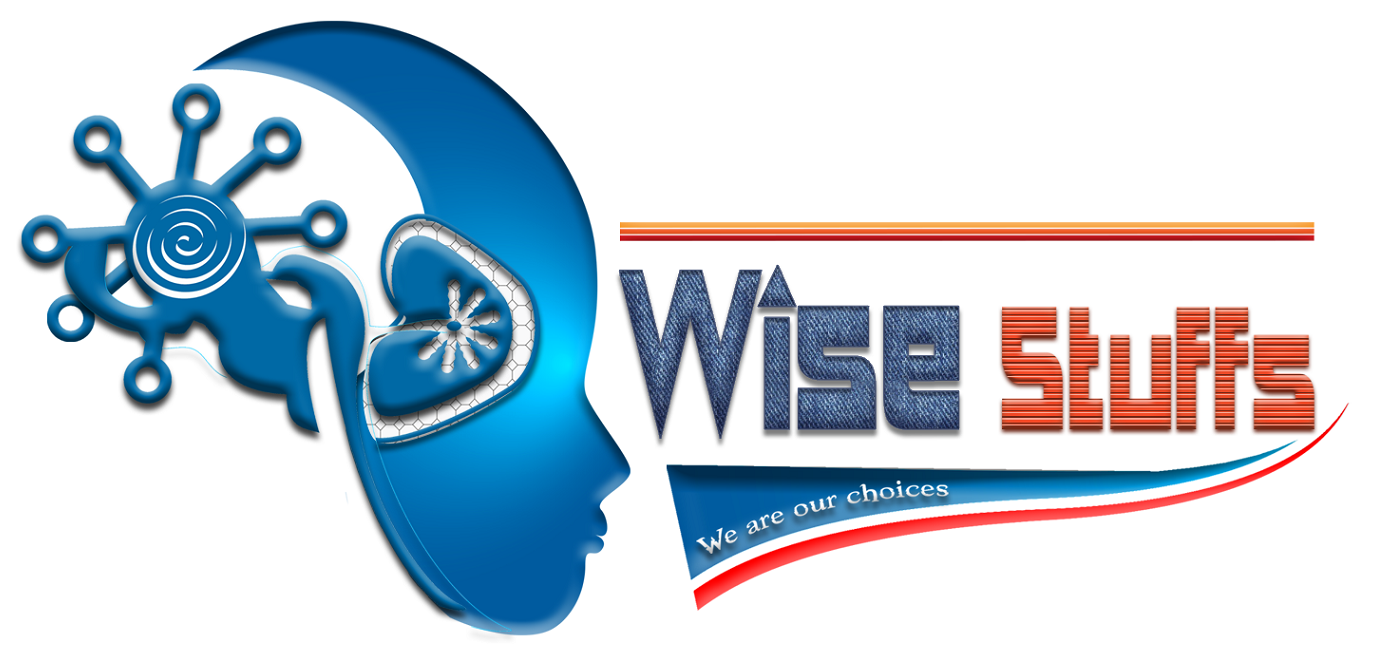Lots of people know how to make money, but are not gifted in the act of preserving it. Frequently, the same risk that was involved in making you rich, is the same risk that can make you poor again
Fred J. Young

The term “wealth management” can be bogus and difficult to define with a good degree of accuracy. But for the purpose of financial security, wealth management can simply be said to be the ability of an individual to improve or enhance his financial situation. Success is a wild animal, and if not tamed can devour you.
In as much as you may wish to employ the services of a wealth management expert, it is very imperative that you have a little knowledge of how to manage your own wealth and resources. “Money is only a tool. It will take you wherever you wish, but it will not replace you as the driver” – Ayn Rand. This book therefore serves as an invaluable pocket manual that will aid you in your wealth management program.
The main purpose of wealth management is to grow a sustainable long term wealth. The focus therefore must be on the long term project. Wealth management is the combination of several forms of planning such as tax/legal planning, investment management planning, banking and real estate planning. As your finances grow, you may require the services of an expert / wealth management team, as it is very dangerous to give room for failure in this area of your quest for financial security. Nobody does it alone!
Wealth management is another way of saying you should be wiser with your money. Your money management should be your first priority in your quest to a sustainable wealth, making money may be easy for some people, but sustaining it, is what distinguishes successful people from failures. Your wealth security can be achieved only if you can earn more, spend less and save more. According to Alex Von Tobel, founder of learnvest.com – a personal finance website and the author of financially fearless “a good financial plan is a road map that shows us exactly how the choices we make today will affect our future”
Wealth management can be divided into 4 elements:
Budgeting
“It isn’t what you earn but how you spend it that fixes your class” – Sinclair Lewis
Budgeting is simply an estimate of your income and expenses, with the view of forecasting your financial future. Budget is more reaching than just a list of wants; it should reflect your goals and aspirations. Make your goals the focal point of your budget.
Also check:
Saving
Saving is the act of deferring your income for future consumption. There are several ways you can save. This involves putting money aside for emergencies, immediate needs (bills, travels, foods etc.) or as investment funds.
As a matter of necessity, you must set aside substantial funds for emergencies, situations such as loss of job, ill health, accidents, huge hospital bills, loss of properties through fire are unpredictable. Experts suggest that you should save enough money for at least 3 to 6 months of expenses. But to be properly prepared, aim for at least 6 to 12 months of expenses in savings.
You should save regularly, aim for at least 20 – 30% of your monthly income. Emergency funds have a way of boosting and shoring up morale, confidence and ultimately, your faith by removing fear from your mind. The mere knowledge that you have an emergency fund in your deposit makes you a fearless and ruthless investor. Only a fool tests the depth of the ocean with both feet. Always have a safety measure in place while you deep yourself into the world’s affairs.
Sometimes to save is difficult, but you have to make that hard decision to let some things go. Don’t buy everything that crosses your sight regardless of how appealing and tempting they may be, the decision is worth taking and may be easier if you set your priorities right.
Retirement is something that everyone must do. Nature has its own cycle and we are powerless against it, start now to plan for your retirement, check these Useful Tips for Saving and planning for retirement
Cost Reduction
This is the process of reducing the cost of production, operation or living in order to increase the profits, income or savings. It involves the identification and removal of unwanted expenses in order to maximize profits without impacting adversely on your business or standard of living.
Any business or individual aspiring to grow financially, must, as a matter of necessity, become a master in the art of cost reduction. Enough is always better than too much. Money can make you happy only if it is spent in the rightful manner and proportion, else it will be a source of pain, heartache and anger.
Have a critical look at your expenses, cut some bits off from here and there, and you will be amazed at the sum you will realize at the end, as a result.
Risk management
The biggest risk is not taking any risk, in a world that is changing really quickly, the only strategy that is guaranteed to fail is not taking risk
Mark Zuckerberg
Risk management is the process of forecasting, identification, prioritizing and evaluation of risk and providing procedures to minimize or avoid their negative impact on your project. Risk is worth taking, those who refuse to take risks, do nothing because all human endeavors are full of risk; they have nothing because if you do nothing you will have nothing and they are nothing.
There is a thin line of distinction between risk taking and recklessness, the former involves wisdom and courage, while the later is pure foolishness. Risk taking becomes recklessness if it does not include a measure of risk management strategy. “All courses of action are risky, so prudence is not in avoiding danger (it is impossible), but in calculating risk and acting decisively. Make mistakes of ambition and not mistakes of sloth. Develop the strength to do bold things, not the strength to suffer” – Niccolo Machiavelli.
If you must be successful, you must be a risk taker, for only in taking risk, can we explore and truly conquer. The greatest risk one can take is not taking risk, so risk must be taken because it is part of life, but it must be taken with wisdom. You must learn how to identify, control and manage risk to reduce its negative impact on your project.
There are three elements of risk management you must master for an effective risk management campaign:
- Risk identification,
- Risk assessment and control.
- Risk control and monitor
The objective of risk management is to ensure that unfortunate events that might occur do not impact negatively on your business goals and also to maximize any opportunity that might arise unexpectedly to your own advantage.
Risk Identification
Risks are events that can cause problems, loss, or benefits when triggered. The best method of identifying risk is to develop a checklist of potential risks by using experiences from past projects in the company or from outside the company.
Risk identification entails identifying sources of risks within and outside the company, to prevent loss or problems from arising and also identifying problems of your competitors in order to tap from it to gain advantage over them. Sources of risks may be internal or external.
Internal sources include:
- Employees: number of employees (under staffed or over staffed), suitability, capabilities, experience, availability at a short notice, efficiency and effectiveness in management.
- Stakeholders: unwillingness of the stakeholders continue with the project, leakages of confidential information to competitors, anti-project activities.
- Technical: suitability of your system to work effectively and efficiently, effectiveness of your policies, degree of errors from your business plans and strategies, safety and environmental policies.
External sources include:
- Natural disaster: establishing your project or living in a flood prone area, thunderstorm/ lightening strike, earthquake and volcanoes, storms and hurricanes.
- Environment and the neighborhood: crime, threats to loss of property or human life, protest, easy accessibility, accident prone.
- Government policies: tax, legislations and regulations.
- Cost effect: price fluctuation of materials in the market, stock rise and fall.
- Clients and contractors: ability to meet up with demands both in quality, quantity and time, consistency of service, ability to deliver on a short notice.
Risk Assessment and Evaluation
Once the risks have been identified, the next big step is to carry out a risk assessment and evaluation. This is the process of gathering information to determine the quantitative and qualitative value of the risks in order to have a deep understanding of their behaviors, determine the severity of their impacts and the probability of their occurrence.
Risk assessment will help you to prioritize your risk management plan. It is often difficult to accurately estimate the probability of occurrence and the impact it will create since there is not enough data and the factors are variables. Each potential risk event is analyzed, often with statistical methods to determine the probability of occurrence and the potential cost of eventual occurrence. Therefore criteria should be developed to help in identifying high risk events and their potential impact on the project.
In carrying out risk assessment, always consider the long term effect, since a positive short term solution can create a negative long term effect. In any business, there are acceptable risks which you identify. These acceptable risks are well understood and tolerated because they form part of the process and therefore unavoidable. Sometimes they may be tolerated because the difficulty and cost of implementing a risk management measure may exceed the expected loss.
Risk Control and Monitor
Risk control and monitor also called risk mitigation is the act of lessening the negative impact of risk or the total elimination of risks in a project. It falls into the following four categories:
- Risk avoidance
- Risk reduction
- Risk sharing
- Risk transfer
- Risk retention
After a thorough risk assessment and evaluation has been concluded, it will present you with a deep knowledge and understanding of the risks and the best possible risk control and monitoring methods to apply.
- Risk Avoidance
This is the total avoidance of risks and events that are likely to lead to risk. This may often come at a higher cost, the cost may only worth it, if after evaluation, the potential negative impact and the probability of occurrence is high.
Risk avoidance strategies may include the avoidance of the establishment of a business/ residency in a high risk area, development of a new business process with an in-built counter measure to curb the potential impact of risks and to use an existing and proven technologies and techniques rather than adopting new technologies or approach, even when the new ones may be better. All human activities are riddled with risks, avoiding risks may seem to be the answer to all the risk problems, but they are definitely not the best way to be wealthy and successful. Avoiding risks may make you lose out on the potential gain there may be if the risks are accepted.
- Risk Reduction
“Go for a business that any idiot can run, because sooner or later, any idiot probably is going to run it” – Peter Lynch
Risk reduction is the reduction of the probability of occurrence of any risk event that might lead to loss and the reduction of the severity of the impact of the risk on the project. It involves the prediction of the risk events and the finding of solutions to prevent or minimize their impact on the project. For example, some companies may reduce the risk of losing all their key experts through accident by prohibiting them from travelling together on the same car or plane. Risk can also be minimized by adequate training of your employees, having a sound business strategy and policy, placing the right people at the right places, hiring the right people, having proper work instructions for all departments in your business, proper documentation of all standard operating procedures, putting adequate health and safety measures in place, and also ensuring proper motivations for your workers. You can decide to give a certain percentage of your business to your top managers; this will greatly motivate them to put in their best, even in your absence you are sure that the work will be done to your satisfaction.
- Risk Sharing
Risk sharing is the sharing of responsibilities for the burden of loss or the benefits of gain from risk activities with a partner. The best way to share risks is to form a partnership with another company, often a company with a higher expertise in some parts of your project; the parties share both the risks and the gains of such risk events.
- Risk Transfer
This is the total transfer of risks from the project party to another party. Notable among this method, is the purchase of insurance or outsourcing. Some sources of risks are typically outside the control of a company, such as environmental and governmental factors. In these cases, the best risk management option is to transfer the risk to a third party through the purchase of insurance or through outsourcing.
- Risk Retention
This is the acceptance of the risks, both the loss and the gains, when they occur. This is often employed especially in small risk events, where the cost of prevention or reduction of the impact is greater than the loss which might be sustained in the event of occurrence, and where the risk is too large that it cannot be insured or managed properly.








